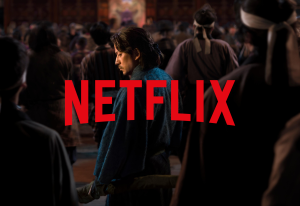December 23 marks the annual day of Festivus, an anti-consumerism and commercialism secular holiday made popular by Seinfeld and referenced numerous times on The Simpsons.
Videos by ComicBook.com
The animated sitcom paid tribute to Festivus in a 2013 couch gag — the sometimes specialized opening of any Simpsons episode — that revealed the snobby Comic Book Guy (Hank Azaria) is a participant of the holiday, originated by author Daniel O’Keefe.
Festivus was celebrated again the next year with another Christmas-themed couch gag, again involving the ironically anti-commercialism Comic Book Guy. The Simpsons made a simpler reference in a 2015 episode, which shows a box marked “Festivus” alongside other holiday decorations in the Simpsons’ attic.
Festivus first gained popularity in 1997 Seinfeld episode “The Strike,” co-written by O’Keefe’s son, Dan O’Keefe, which introduced the alternative holiday as a creation of Frank Costanza’s (Jerry Stiller), much to the chagrin of son George (Jason Alexander).
Traditions include the erecting of an unadorned aluminum pole — a concept introduced by co-writer Jeff Schaffer — as well as a customary dinner to be followed by the Airing of Grievances and the Feats of Strength.
The Airing of Grievances sees individuals sharing their respective disappointments with one another, while the physical Feats of Strength finds individuals engaging in wrestling matches. Per tradition, Festivus is not ended until the challenged combatant pins the head of the household.
“More and more people are familiar with what Festivus is, and it’s growing,” Chicago resident and Festivus celebrator Jennifer Galdes told The New York Times in 2004.
“This year many more people, when they got the invite, responded with, ‘Will there be an airing of the grievances and feats of strength?’”
The younger O’Keefe noted the real-life untraditional holiday, minted by his father in 1966, was “entirely more peculiar than on the show” and was in a state of constant flux, once even involving “a clock in a bag” — its intended symbolism lost even on the younger O’Keefe.
“It was another kind of way with dealing with something else that was going on at the time: the rebelliousness of the son against the father and the father trying to prove he was still stronger than the son,” Stiller said of the physical and spiritual battle that existed between Frank and George long before Festivus reached Seinfeld.
“It was like King Lear.”








